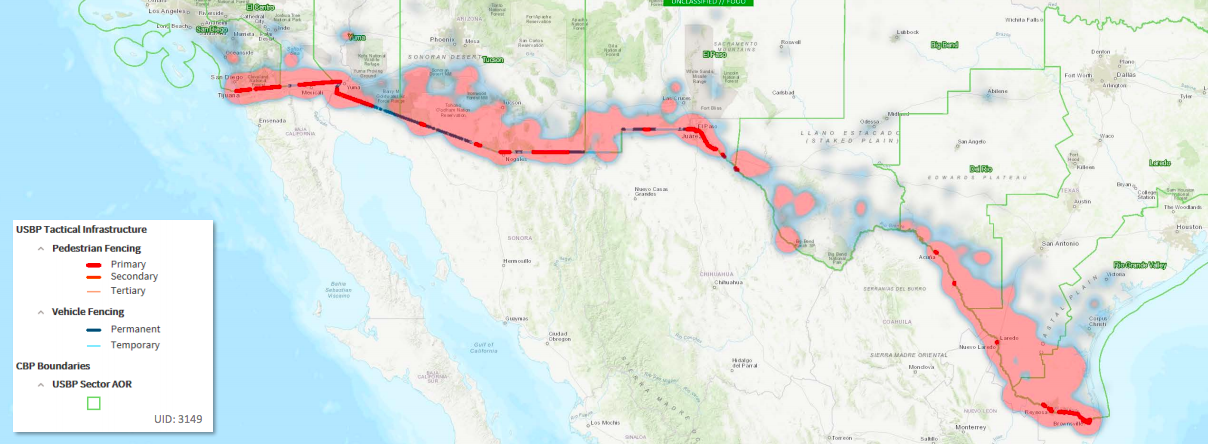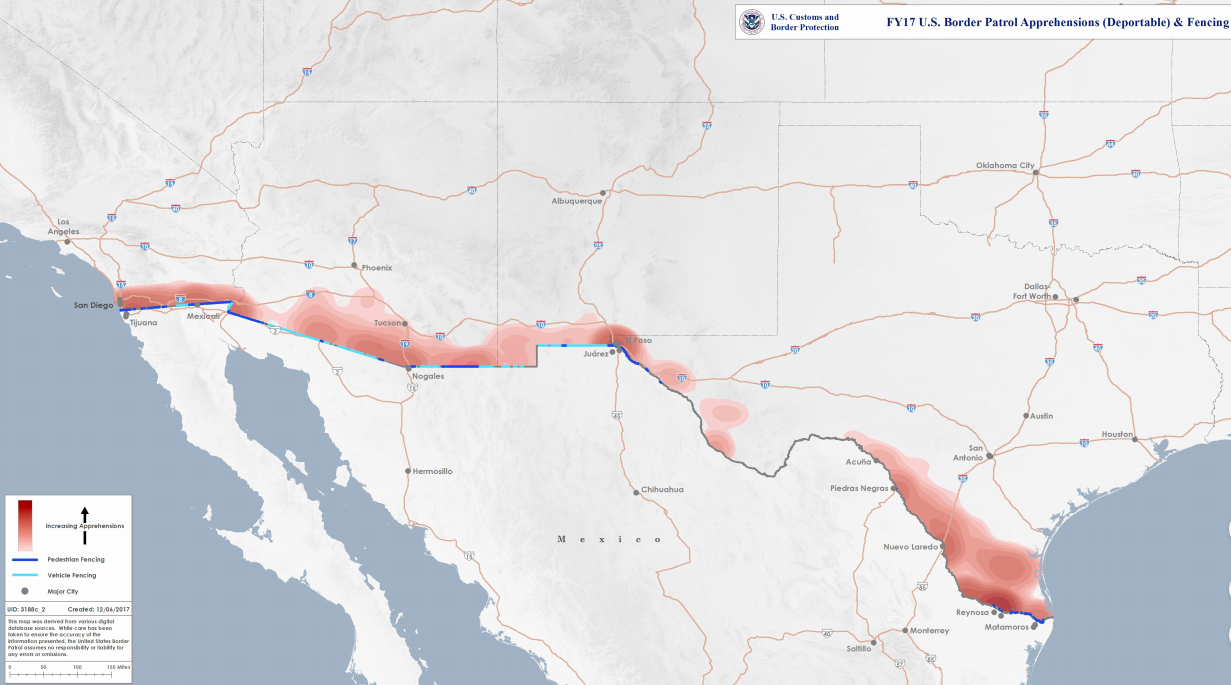President Trump’s national emergency declaration to build hundreds more miles of wall along the U.S.-Mexico border was short on specifics about where the steel structures would go.
Trump’s emergency order faces opposition in Congress. And even the president, in announcing the emergency declaration Friday, admitted it could get bogged down in court fights for some time to come.
In the meantime, though, Trump administration officials are looking to Homeland Security experts for guidance about where along the nearly 2,000-mile southern border it makes sense to add steel wall structures.
“So it actually ends up being a complicated question,” one official said Friday. “The men and women of the Border Patrol each year put together a border security improvement plan, which looks at all of the areas on the 2,000-mile border by risk. It takes into consideration smuggling routes, violent gangs, humanitarian issues, different types of terrain, and figures out where we need physical barriers the most. Based on that list, that is what we build against.”
The Department of Homeland Security is working on projects from money they were given in 2017 and 2018 appropriations. They will decide on where to spend Trump’s $8 billion after Customs and Border Protection’s annual report on the 2018 fiscal year, which ended on Sept. 30, 2018, is released.

Some hints as to where the Trump administration will put up more wall can be found in the guidelines that specify how each pocket of money must be spent.
“It’s going to be a little bit of mix and match, because instead of Congress just providing the money, the different pots have different authorizations for how and where we can use that money. And so, we are in the process to make sure that we can make those dollars go as far as they possibly can, and we expect they will be able to go farther than 234 miles,” a second administration official said.
Of the $8 billion, $1.375 billion was approved by Congress last week for a few wall additions and patch-up jobs in the coming year. That money is enough for 55 miles of pedestrian fencing.
The rest of the money is funding the White House took from the Pentagon and the Treasury Department. These cash pots must be spent on projects related to their original intention, according to the national emergency order.
The White House is using $600 million from the Treasury Department’s drug forfeiture fund, $2.5 billion from the Defense Department’s drug interdiction program, and $3.5 billion from a military construction fund.
The drug interdiction money must be spent on projects that interrupt drug smuggling activity — in areas of the border where narcotics operations are especially prevalent. Based on CBP’s forthcoming report, DHS will tell the Pentagon which regions need better or new wall, because agents and officers are seeing an uptick in drug busts there.
Regions with high narcotic activity include Laredo, Texas; Pharr, Texas; Nogales and Yuma, Ariz.; and El Centro, Calif.
Guidelines for how to use the $600 million of drug forfeiture money must be spent on law enforcement purposes. That gives DHS significant latitude in how to use it. Around 700 miles of existing southern border have some type of barrier, but DHS could build more in areas that have high illegal entry rates.

The final $3.6 billion pot of military construction money must go toward projects that help military operations. Last April and again in the fall, Trump approved National Guard and active-duty troop deployments to border states. The military has largely remained behind the scenes, monitoring cameras and sensors, repairing vehicles, installing concertina wire on existing barriers, and other tasks.
The administration is limited to only building a steel, bollard wall. This type of barrier was approved by Congress last fall as the only type of wall it would allow. Tests in 2017 by the Army Corps of Engineers and CBP officers later showed it to be the most effective type of barrier, among by eight wall prototypes evaluated in San Diego, Calif.





